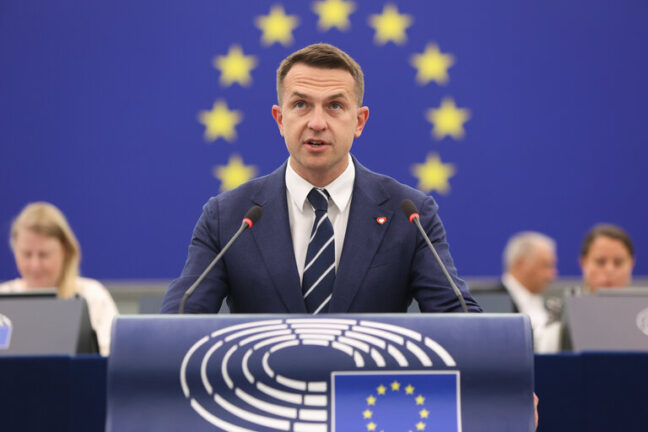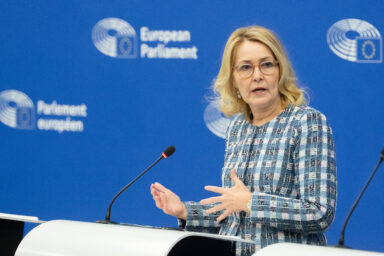EU member states representatives adopted on Monday a mandate for negotiations with the European Parliament on the proposal to establish the European Defence Industry Programme. The instrument aims to enhance the readiness of the EU’s defence industry. It also includes additional support for Ukraine.
European Defence Industry Programme (EDIP) is now one step closer to realization. By the end of 2027, the programme is to provide €3bn to boost EU’s defence industry. This is the negotiating position of the Council as the Committee of Permanent Representatives (COREPER) agreed it on Monday.
The agreement on the Council’s negotiating mandate now allows the presidency to start negotiations with the European Parliament. The most important actions to be eligible for funding under the EDIP include the speeding up of defence production, common procurement, and increased interoperability and interchangeability among member states.
Most components must originate within the EU
The Council has agreed that the cost of components originating outside the European Economic Area is not to exceed 35 per cent of the estimated cost of the final product. Also, no components are to come from non-associated countries contravening the security and defence interests of the EU.
The Council sends a clear message: The EU is stepping up defence readiness. The EDIP will boost cooperation between member states, strengthen our industry, and support both EU defence capabilities and long-term preparedness. – Adam Szłapka, Polish Minister for the European Union
Through EDIP, EU will maintain control over the design and development of its defence products. This is particularly important in the light of potential supply chain disruptions or restrictions imposed by non-EU countries. Exceptions will apply to actions related to increasing the production capacity for ammunition and missiles, as such products need to be available urgently and in large numbers.
The EDIP budget will allocate €300 million to the Ukraine Support Instrument (USI). The Council clarified that, in addition to standard EDIP funding criteria, the USI can fund components and defence products originating from Ukraine and from companies incorporated in (and executive management operating in) the country.
You might be interested
Russian invasion as a trigger
On 11 March 2022—two weeks after Russia had started its full-scale invasion of Ukraine—the heads of EU members states made a commitment to “bolster European defence capabilities”. They agreed to increase defence expenditure, step up cooperation through joint projects, and common procurement of defence capabilities, as well as to boost innovation and strengthen and develop the EU defence industry.

The Commission adopted the proposal for the regulation to establish EDIP in March 2024. Boasting a financial package of €1.5bn for the period from 2025 to 2027, the proposal was to build on existing defence programmes. It seeks to incentivise the common procurement of defence products and the reinforcement of defence industry manufacturing capacities.
In March 2025, the European Council stressed that Europe must accept more responsibility for its own defence and sovereignty. The goal was to improve the bloc’s ability to act when facing—and to deal autonomously with—both immediate and future challenges and threats. At that said Council meeting, all member states committed to strengthening their overall defence readiness and to reducing strategic dependencies.
Between 2021 and 2024, EU member states’ total defence expenditure rose by more than 30 per cent. In 2024, it reached an estimated €326bn, or about 1.9 per cent of the EU GDP.











